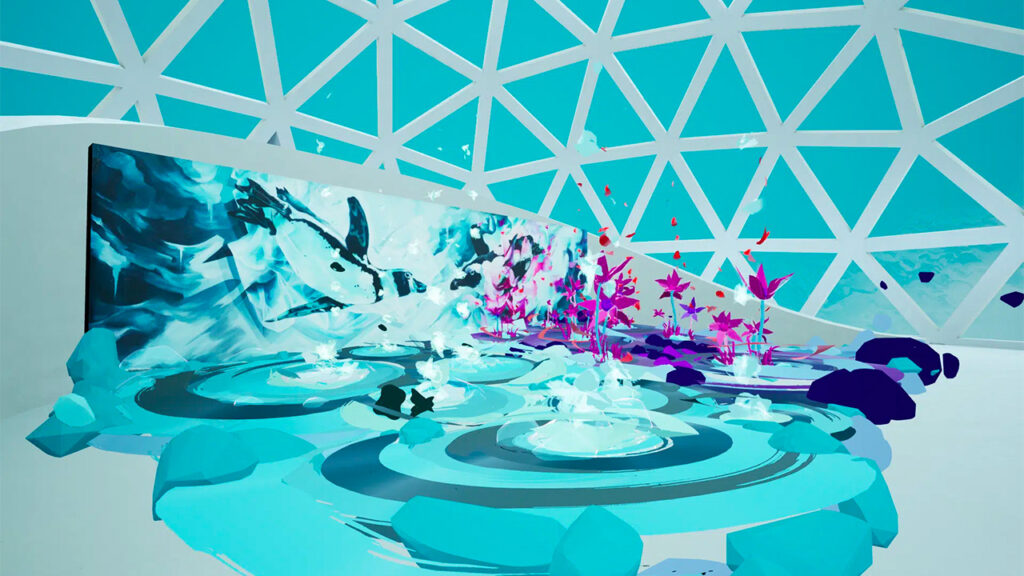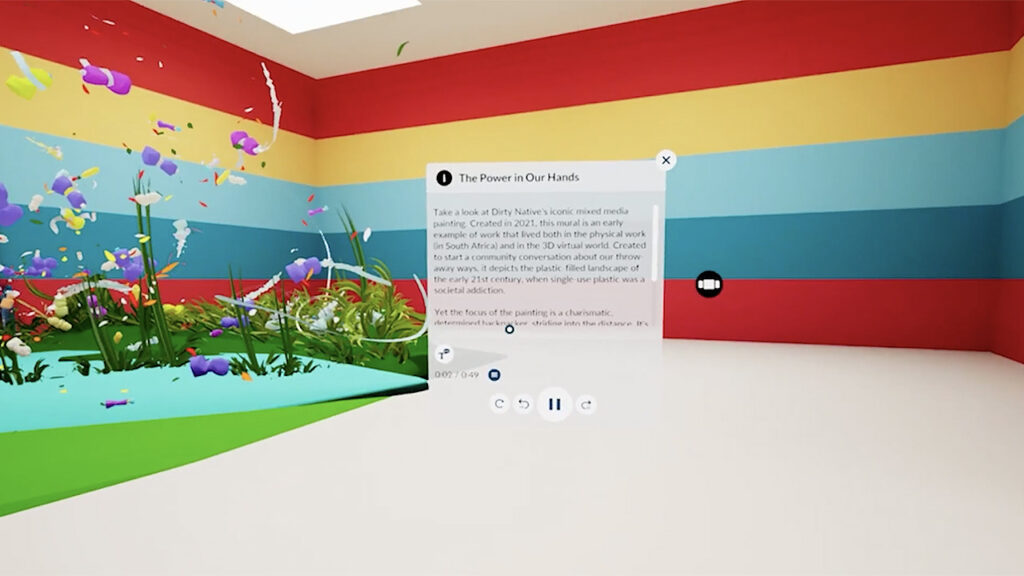Late in 2020, immersive studio Cooperative Innovations launched Curatours, an application enabling museums to easily build and host their own virtual tours and programs. Institutions like Charles Rennie Mackintosh’s Hill House and the Anne Frank House swiftly signed up to create their own virtual reality (VR) tours, tapping the unique social aspect of Curatours’ virtual experiences, where users can interact with fellow visitors and exhibition guides. Expanding on its offer, the platform has lately created its first virtual museum, an engaging multi-person experience backed by a cause.
Unveiled in November, the Museum of Plastic 2121 is an “imagined future museum” presenting a bright view of ecology should our reliance on single-use plastics be reduced or eliminated. The museum emerges from scientific research by Hull University’s Circular Plastics Collabatory and the Museum of Design in Plastics, Arts University Bournemouth, and features murals and 3D paintings by activist organizations Greenpop and Baz-Art, aimed at spurring public engagement and climate action. Visitors can access the museum via VR headset or desktop, joining individually or as a group.

The Museum of Plastic 2121 features murals and 3D works by participating artists aimed at spurring public engagement and climate action. Image: Curatours
In delivering a pressing message through artistic expression and creative technologies, Lauren Livesay, Cooperative Innovations’ Partnership Manager, says, “We were able to be both playful and innovative, working with a team of international scientists and researchers to showcase a realistic positive future forecast, while really stretching the limits of what is currently possible in VR.”
Below, Livesay shares more about how the Museum of Plastic 2121 expands on Curatours’ efforts in building storytelling, education, and social interaction into its virtual experiences.
Why is the Museum of Plastic 2121 a great first virtual museum for Curatours?
At its heart, Curatours is a tool to tell stories, and we were able to trace the story of plastic through its past, present, and hopeful future in an immersive and visually stunning way. It also allowed us to showcase the amazing opportunities for partnership and collaboration within the space — our partners on the museum came from across the globe, spanning multiple continents. We never met in the same physical space, but we were able to work together digitally to showcase groundbreaking research and scientific projection alongside stunning new artistic commissions.
What story does the museum tell?
We launched a new wing each week through the month of November, tying into the global conversations prompted by and coming out of the COP26 global summit. Each wing takes you through a different aspect of the plastic journey, from the science behind the substance to the industry that produces it, and from the history of the product to its impact on the environment — plus a hopeful forecast of how we can make changes now to reduce our reliance on single-use plastics and contribute to a sea change in global behavior.


Above: Users, represented by avatars, exploring the virtual museum. Below: The History Wing of the museum, featuring a mural by Dirty Native. Images: Curatours
What technologies were involved in creating Museum of Plastic 2121?
The Curatours platform is built in Unreal Engine. Curatours takes advantage of technologies that we’ve developed over the past five years, including Ikabod, an Inverse Kinematics Solver we’ve developed to enable full-body tracking. This allows us to increase immersion and social interaction in a digital space by giving avatars realistic and representative body language.
How does the museum relate to and depart from other virtual museum experiences?
There are many wonderful virtual tours available out there, but so many of them are designed for a single piece of hardware, meaning that there is no opportunity to have the social experiences that we feel make museum and cultural visits so compelling. Being able to join with others to experience a space or story together is really what sets Curatours and the Museum of Plastic apart.
How else is Curatours hoping to expand its virtual offerings?
One of our next releases will be a virtual tour of the Anne Frank House, which we’re so excited to share with our audiences. We’re bringing an existing VR tour of the secret annex space onto our platform, so it will be accessible in non-VR for the first time and in a social way, which is hugely important for the education and outreach work done by the team at the museum. Curatours will be coming to iOS in the early part of 2022, so we’re looking forward to extending our audiences even further.
Edited by Min Chen



